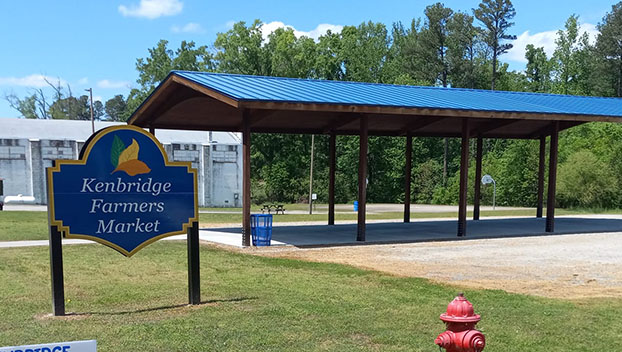Comprehensive Plan: Where are the county’s growth corridors?
Published 2:54 pm Friday, March 28, 2025
|
Getting your Trinity Audio player ready...
|
Agriculture is the number one land use in Lunenburg County. That part isn’t in dispute. But where are the “growth corridors” for the county? Where are county and town officials wanting to drive more houses and businesses? As we go through the fourth part of this look at the proposed comprehensive plan, it’s all about growth and where Lunenburg wants to put it.
First, for anyone who might not know, let’s go over where the majority is located now. In the county, businesses are primarily found around the Historic Courthouse Area on State Route 49. In the Town of Kenbridge, most businesses are situated along State Route 40 in the downtown area. In the Town of Victoria, businesses are mainly concentrated in the downtown area along State Routes 49 and 40.
For industrial sites, in Kenbridge that’s primarily located in the Commercentre, along State Route 40 west of the Commercentre, and on Highway 137/138 east of the town. In Victoria, the key industrial area is the Victoria Industrial Park, west of State Route 49. As part of the comprehensive plan, the county lists its major industries as ABC Recycling, Barnes Wood & Lumber, B & L Prime Pallets, ComforTek (Fellowship Chair), Global Refining Group, Golden Leaf Tobacco Company, Kenbridge Construction, Lancaster Leaf, Lignetics, Lunenburg Correctional Center, Meridian Waste, Outback Wood Products, and Virginia Marble.
Where are the growth corridors?
So with that being said, where are the growth corridors being proposed? There is a primary growth corridor along Germantown Road, which connects the Lunenburg Courthouse area to Route 360. The argument is that the area facilitates access to the Town of Keysville in neighboring Charlotte County and the Meherrin Village Center, where rail access could further enhance business potential.
“These corridors are often in areas where utility services can be provided, making them ideal for larger and more complex developments,” the proposed plan states. “When utilities are available or can be extended, these primary development corridors are preferred for significant business, industrial, and institutional growth. They may also contain rail lines, enhancing economic potential.”
So that’s part of what everyone is looking for, when it comes to growth corridors. The county and towns also include in the plan that these areas are “suitable for higher-density residential developments, such as manufactured home parks, garden apartments, and townhouses.”
Looking at the towns
The main focus for growth, the plan argues, needs to be the towns, as they check off most of the needs we just listed above.
“These towns provide essential public utilities and a variety of concentrated business services, including grocery stores, restaurants, and parks,” the plan states. “Additionally, they offer educational facilities, healthcare services, and recreational amenities, making them attractive locations for new residential and commercial developments. The availability of these services supports the growth and development of the surrounding areas, ensuring that the needs of residents and businesses are met efficiently.”
The plan also identifies 11 village centers that officials want to see continue as “hubs for social, economic and recreational activities.” So not the bigger push for growth the county wants to drive to the towns, but still areas they hope to see more business and residential activity.
That list includes Bruceville, Dundas, Fort Mitchell, Love’s Mill, Lunenburg Courthouse, Meherrin, Nutbush, Oral Oaks, Plymouth, Rehoboth, and Traffic.
“Each of these village centers holds historical and cultural significance, featuring key landmarks, local businesses, and community facilities,” the proposed comprehensive plan states. “They contribute to the rural character and community cohesion in Lunenburg County.”
One small problem
There is one tiny problem that’s acknowledged in the plan. Lunenburg still has both a population problem and an age problem. According to data from the University of Virginia’s Weldon Cooper Center, the Lunenburg population is dropping and those remaining are aging out of the workforce.
In 2000, Lunenburg had 13,146 residents. That fell by 232 in 2010 and another 978 in 2020. Despite a small increase from 2020 to the present day, the Weldon Cooper data projects that Lunenburg will see some severe losses over the next 26 years.
Lunenburg County’s population was 11,936 in the 2020 census, and Weldon Cooper Center’s projections show slight growth in 2023 at 12,060. However, the study expects that to decline to 10,801 people in 2030, 10,046 in 2040 and 9,441 by 2050.
Beyond growth corridors
So how do you fix that? A study by the U.S. Department of Agriculture highlighted three key points. The good news is that Lunenburg is already working on some of them.
First, you need high-speed internet. That’s not to play games or message friends. You need it to attract businesses. With many companies, internet sales is a key part of their operation. That’s even true for some farms. According to the USDA, internet sales for agricultural products netted a total of $40.2 billion. High-speed internet also gives schools more opportunities to connect and hear from experts who live thousands of miles away, to experience virtual reality “tours” that link up with their lessons on places like ancient Rome. That’s already in the works, with the Kinex project expected to fully cover Lunenburg County by 2026 at the latest, giving everyone access to broadband high-speed internet.
A second thing needed is to focus on bringing in higher-paying businesses. Good-paying jobs will draw workers and their families in. A recent success in that area is the Central Virginia Poultry Cooperative, which launched in February. A farmer-led operation, they sell cage-free eggs to Dutch Country Organics LLC, out of Indiana. In turn, Dutch Country distributes the eggs to places like Walmart, Kroger, Target and Cosco.
Third, the argument is that Lunenburg is in a good position to be a ‘bedroom community’ of sorts. That is, people work in other areas and live here. There is the Foreign Affairs Security Training Center (FAST-C) in Nottoway County and several nearby data centers as examples where people could commute from Lunenburg.



